
Bates professors know that many first-year students can feel vulnerable, lost, and isolated. Those feelings, while normal, can deny students what they came to college for: the collective joy of learning.
This was on Professor of Mathematics Meredith Greer’s mind last year as she set out to create a new First-Year Seminar, a linchpin course taken by every new Bates student.
She wanted to find a way to create a joyful classroom experience to unite her students, enhance their learning, and teach them some math. Serendipity delivered part of the answer: robots.
While volunteering in the Lewiston Public Schools during her 2022–23 sabbatical, Greer had a chance encounter with an educator who was preparing to use robotics to teach math lessons. That led to a win-win collaboration between Greer’s First-Year Seminar last fall and a team of Lewiston technology coaches.
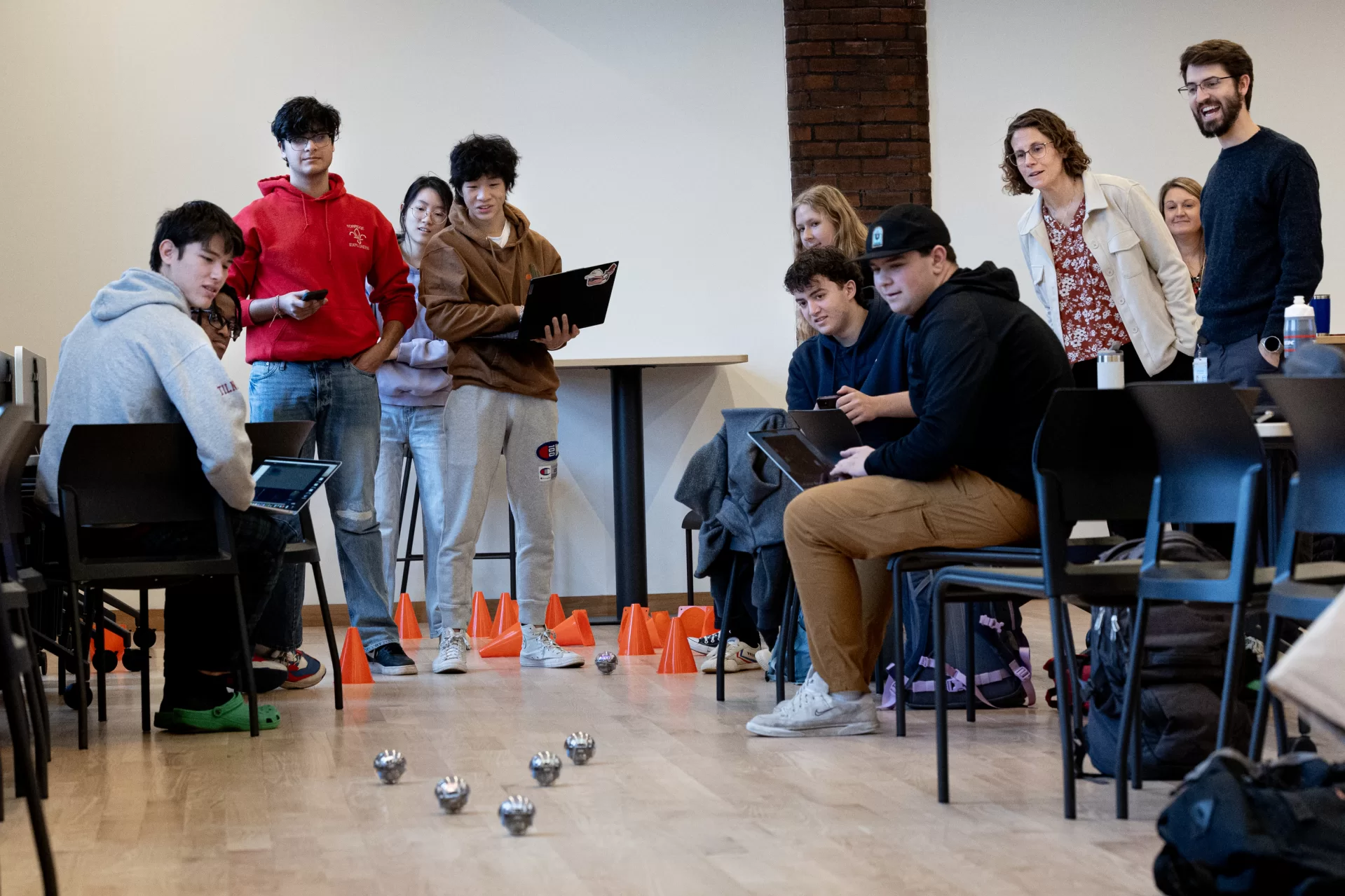
Thanks to the Lewiston tech team, Greer’s students got to use robots in their math class — which was a blast — and the Lewiston educators got to test important ideas about the benefits in teaching math with robots.
For example, they found that doing math-based activities with robots, because of the element of play, helps make students more resilient in the face of failure. “They are more willing to try again and again. They are more persistent,” said Jennifer LaBonte, who coordinates the technology coaches in the Lewiston Public Schools.
In developing her First-Year Seminar, Greer sought to create a space where playing games, enjoying crafts, and creating art would mean working together as members of a supportive team.
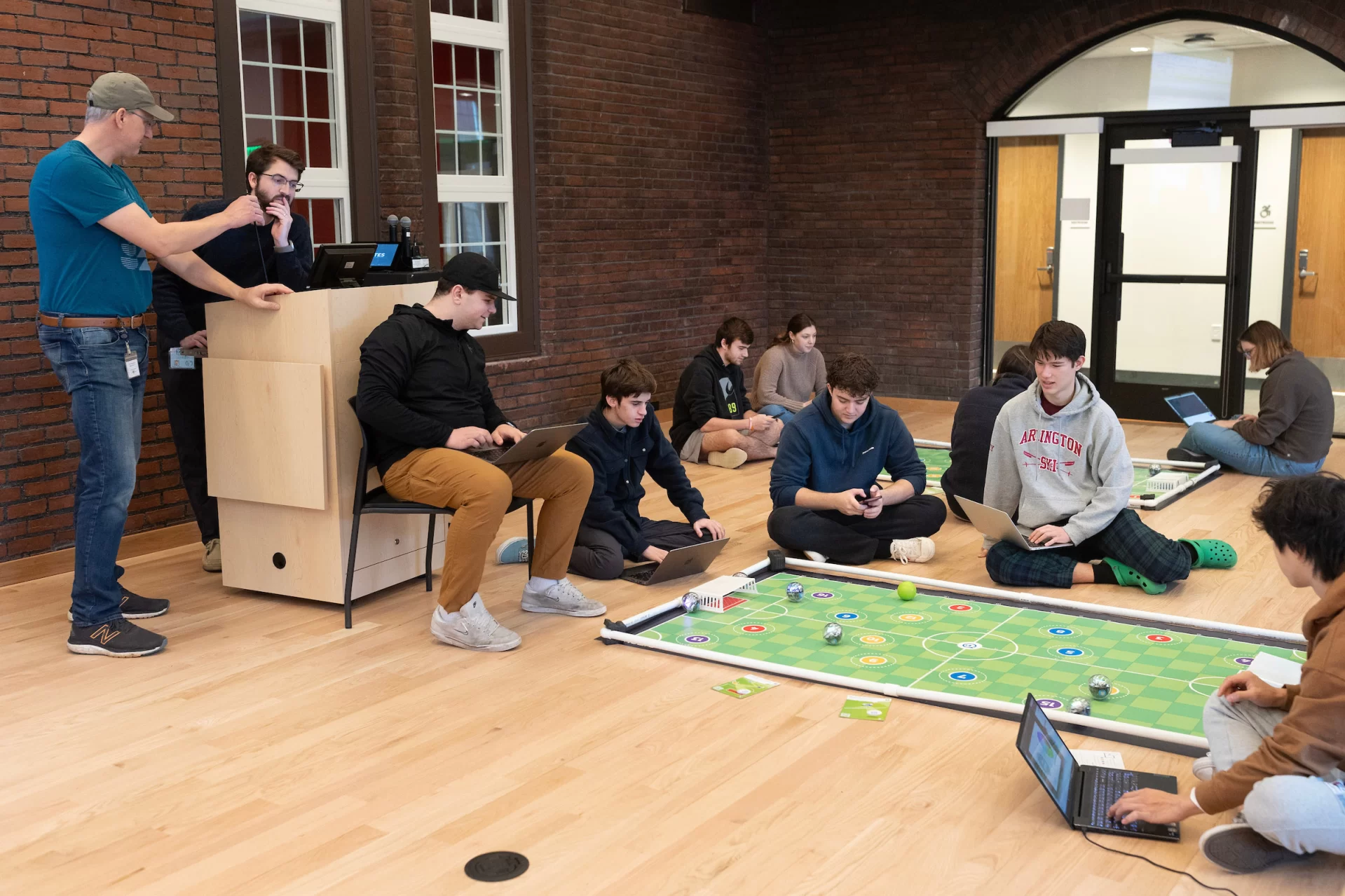
“Some of the goals were academic. Some of them were community building,” said Greer. “I wanted us to enjoy our time together and be creative and just really talk about how we learn, how they learned things in the past, and, as they transition to college, how does that help them moving forward?”
While on her sabbatical, Greer volunteered as a parent with the Lewiston Public Schools Math Standards Design Team to help align new math curriculums with state standards. She participated in an activity that taught math lessons using new robots purchased in 2022 with part of a $180,000 federal grant from COVID relief funds. Greer knew instantly the robots could have a powerful impact in her new course. That night, Greer and LaBonte formed their partnership.
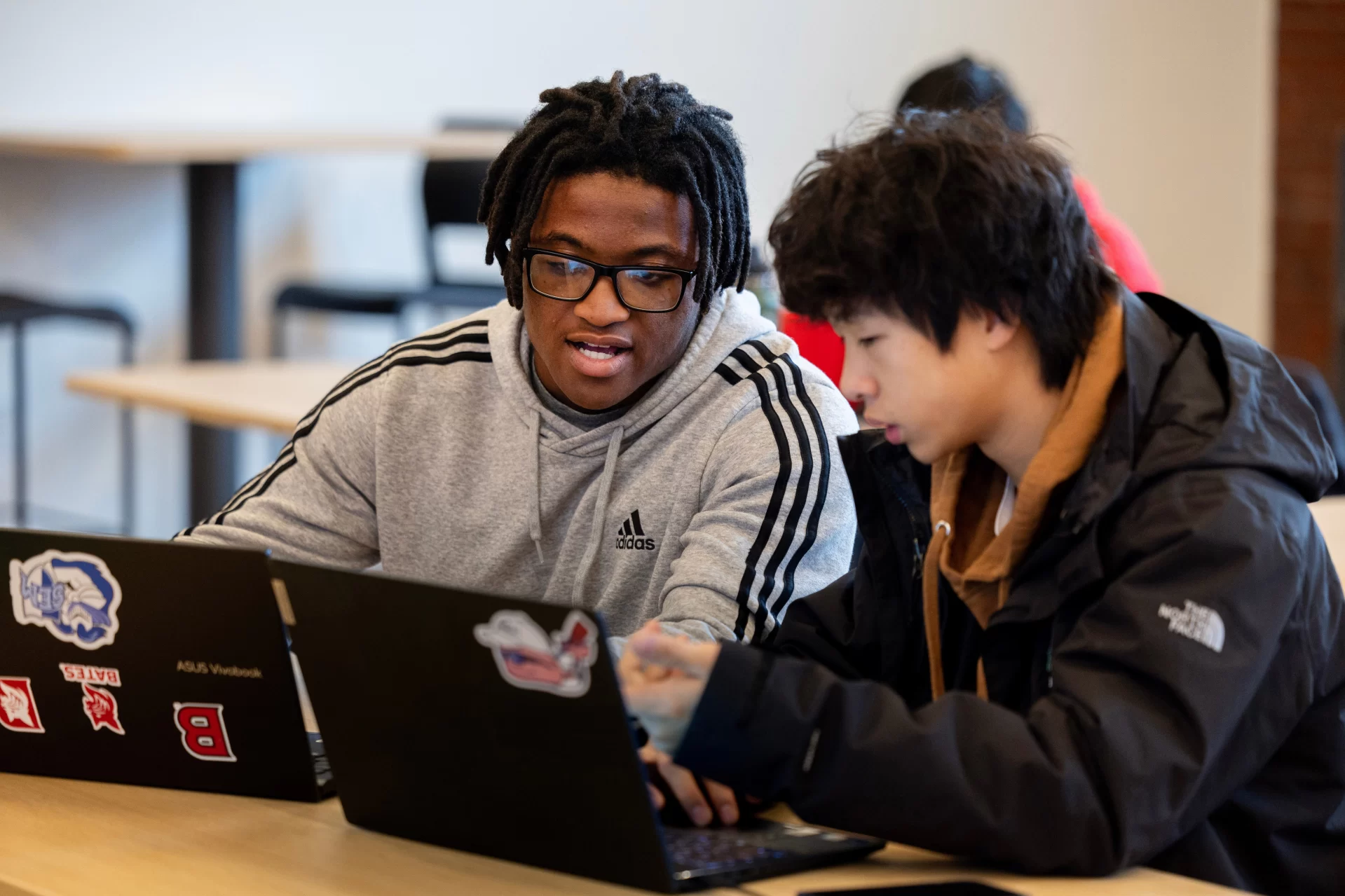
In addition to using coding in robotics, Greer’s seminar did what its title — “Learning Math Using Crafts, Coding, and Games” — promised.
Specifically, Greer led her students in an investigation of “how humans think about math at age 5, age 12, or age 18 and beyond” through various activities including card games, crochet, origami, and age-appropriate computer coding.
The card games taught probability, statistics, and the concept of modular arithmetic. Crafts, such as origami, taught geometry by forcing the students to think in the abstract. Throughout the seminar, students shared personal reflections and memories of childhood games and math lessons from grade school.
“The students definitely talked with each other during class,” said Greer. “I could put anyone in any group and they collaborated smoothly. They were all actively participating in class and were actively involved. Those were the goals. I feel it went really well.”
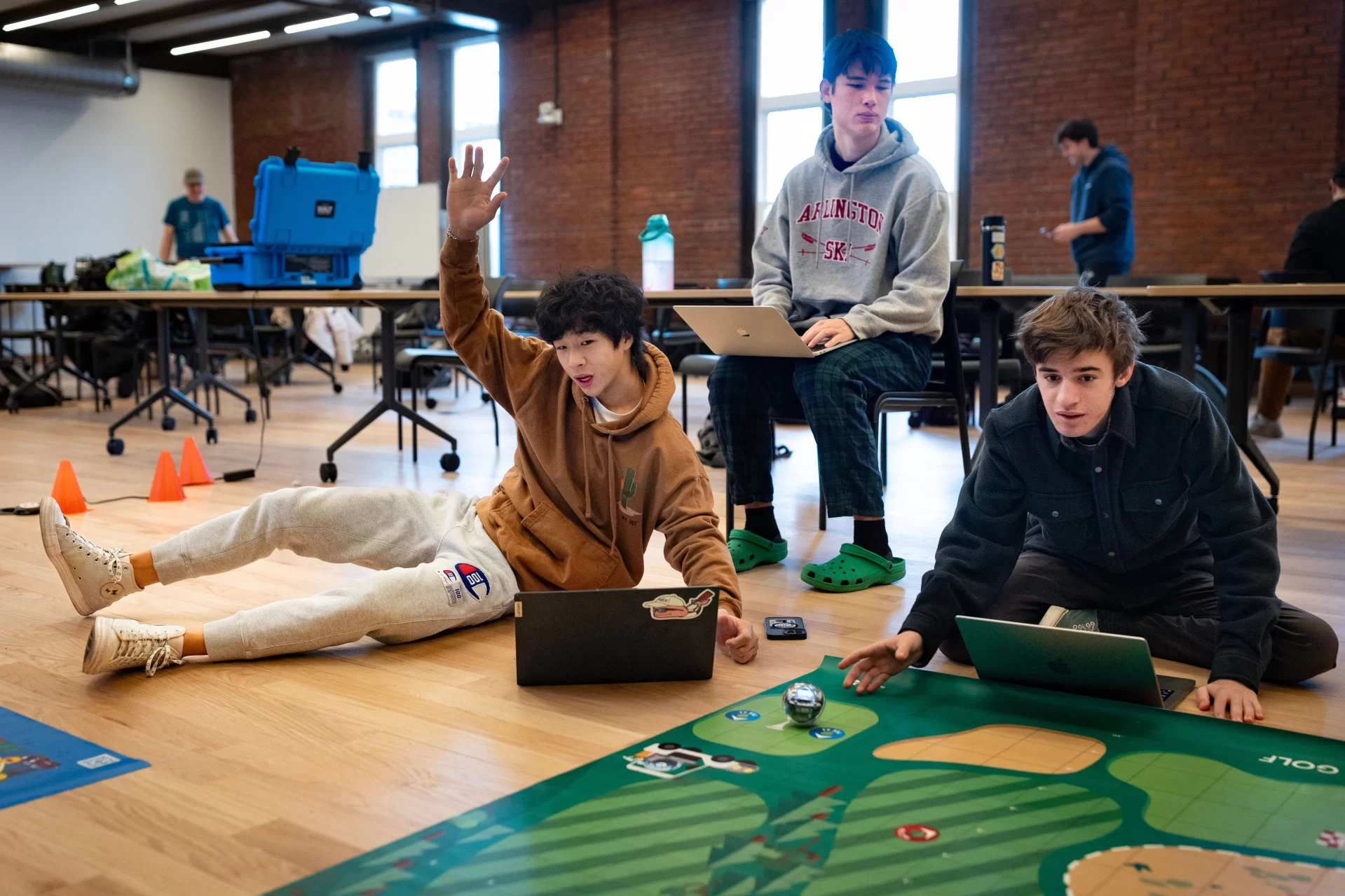
Molly Scandrett ’27 of Cheshire, Conn., who enjoys math, called it a “nice low-stakes, low-pressure way to get introduced to college.” Scandrett also appreciated getting to work with educators from the local school system, since she’s interested in studying education.
“They wanted our feedback as much as we wanted to use their robots. It was mutually beneficial,” Scandrett said.
Last fall, LaBonte came to Bates three times with the robots and technology coaches Jeff Padgett, Michael Heidkamp, and Jason Reblin, as well as Tammy Thibodeau, an instructional specialist for technology and STEM in the local school system.
Each time they brought age-appropriate robots. For the final visit, in early November, they brought Sphero BOLT robots to Chase Hall Lounge. Designed for educational and recreational purposes, the Sphero BOLT is a programmable robot ball that the educators use to explore various math concepts through coding and hands-on activities.
For example, they use the robots to teach students the equation for speed (which is distance divided by time) by having the students program the robots to move a specific distance for a specific time. The robotics games can get more advanced, such as when students are asked to move the robot through a maze.
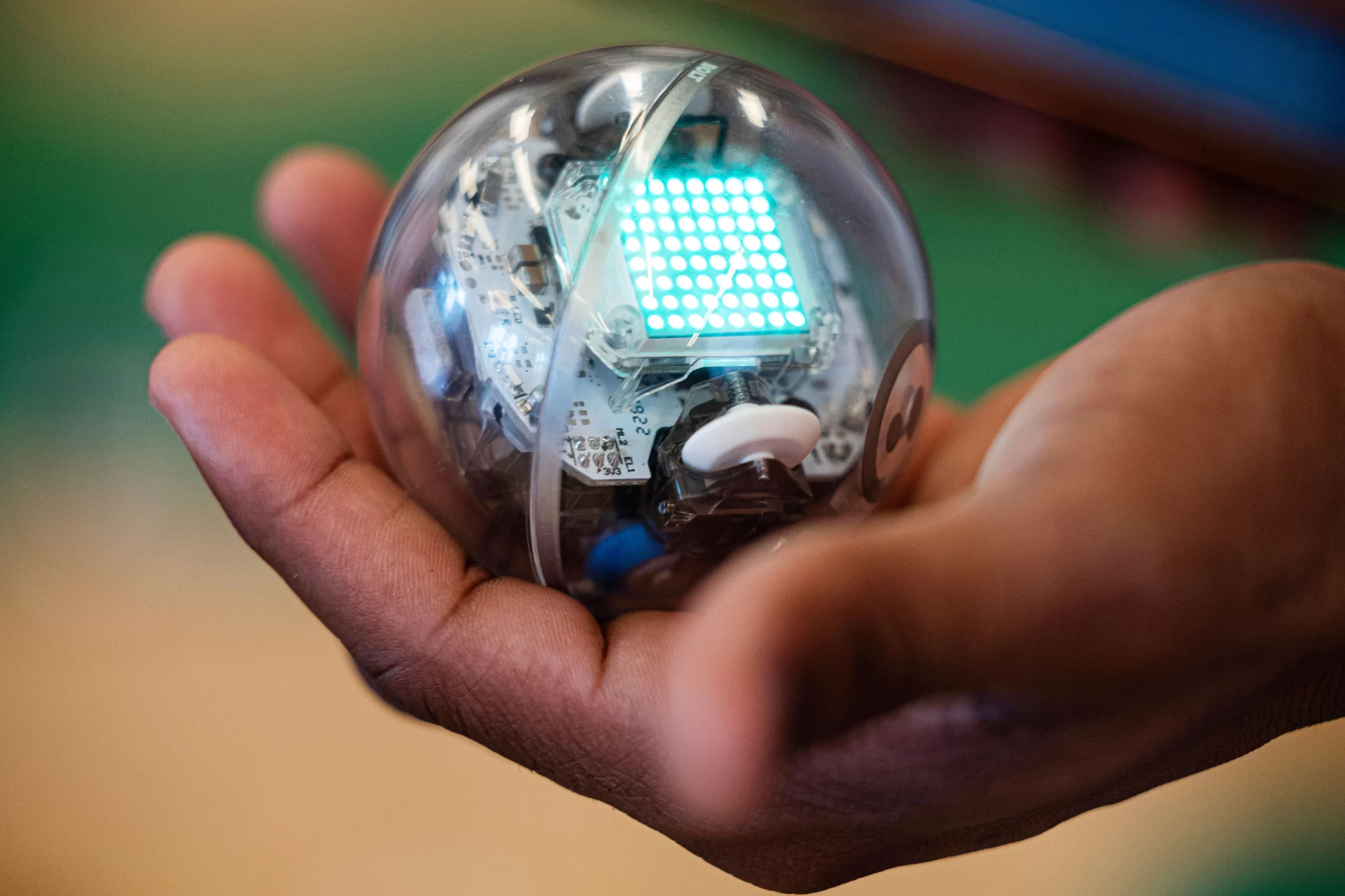
Since using the robots in math curriculum is a new venture, LaBonte said seeing how the 18- and 19-year-old Bates students responded to and enjoyed the robots helped instruct the tech coaches on the best approach to teach new math lessons in high school.
In the end, LaBonte said, the Bates students playing with the robots in Chase Hall Lounge demonstrated that there is a big difference between learning from traditional exercise books — and from games.
“The college kids loved it,” LaBonte said. “The robots help take away the dependency on doing math calculations. And the students want to play with them. The robot will collect the information and then spit out the number while demonstrating what the calculation means. It’s a fun way to introduce a math equation.”



